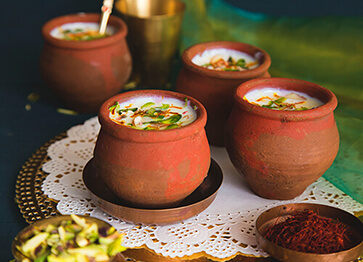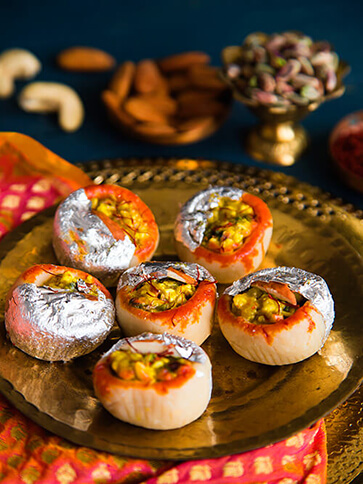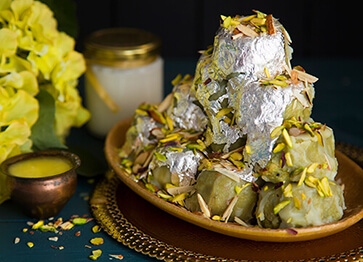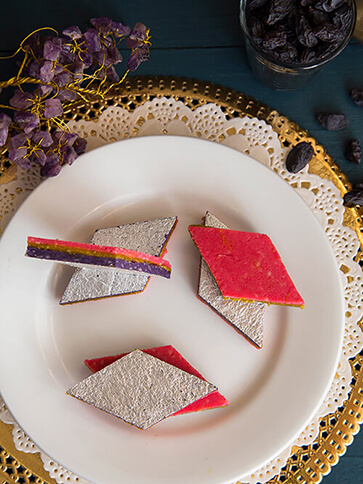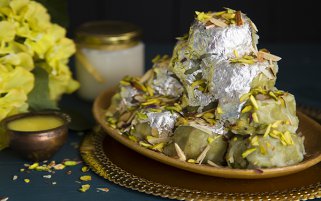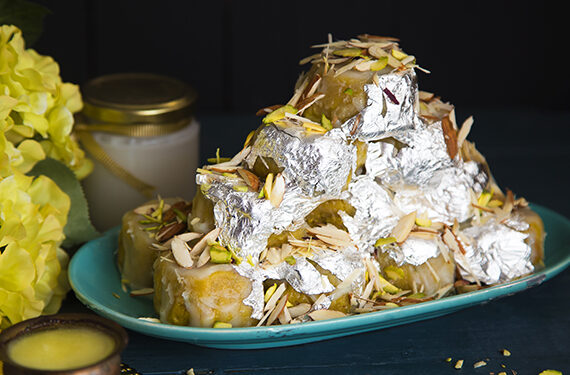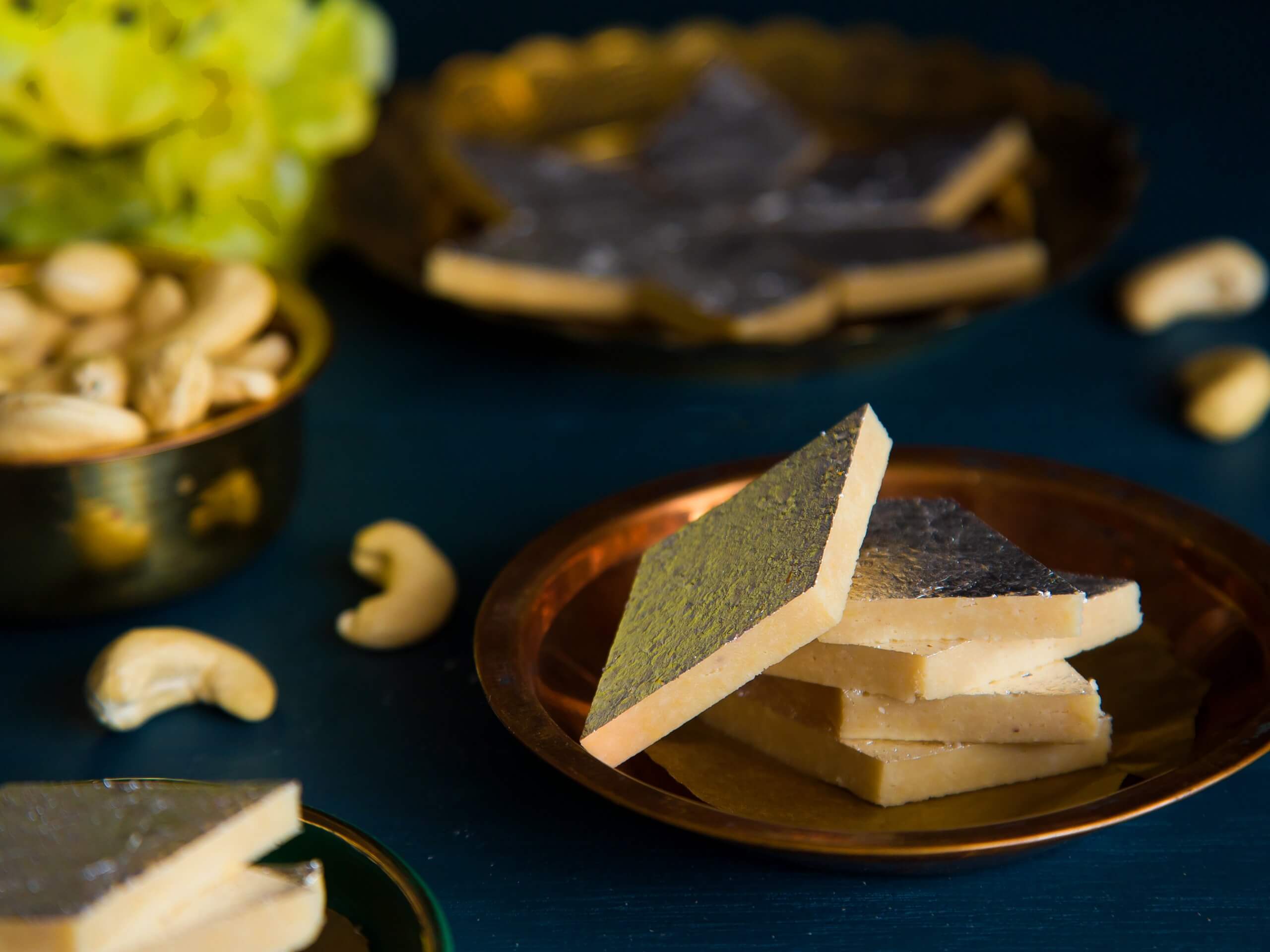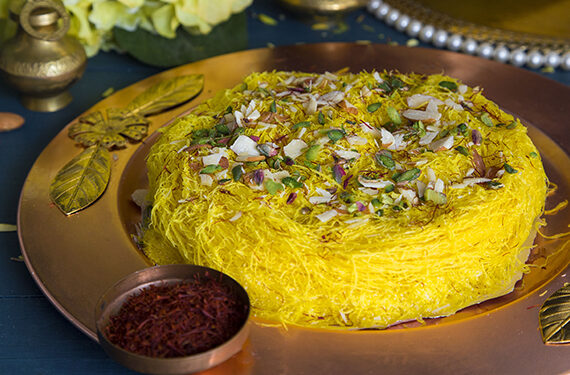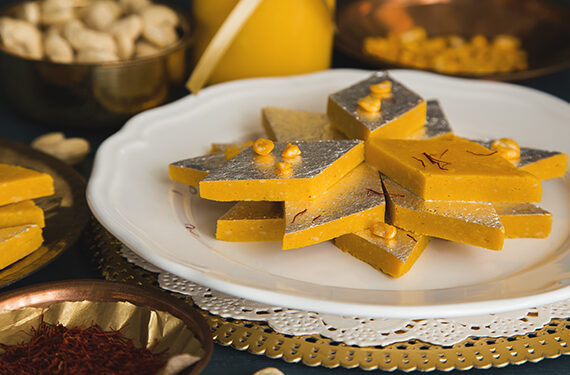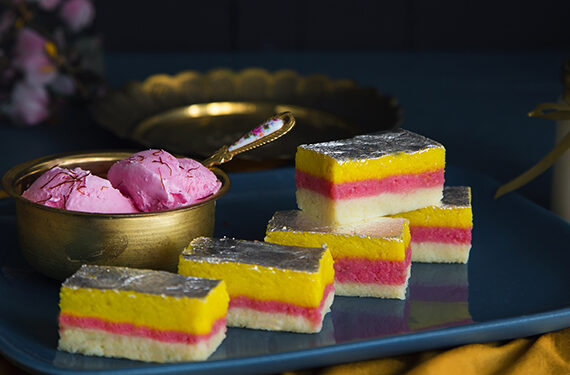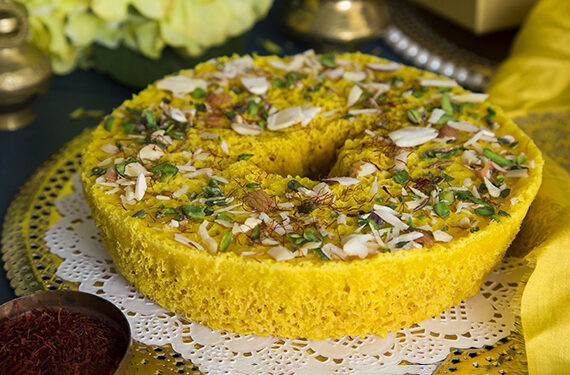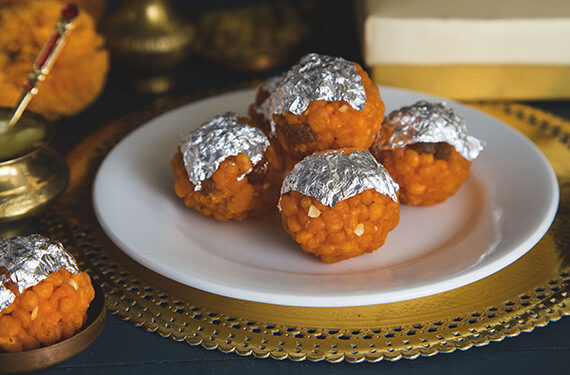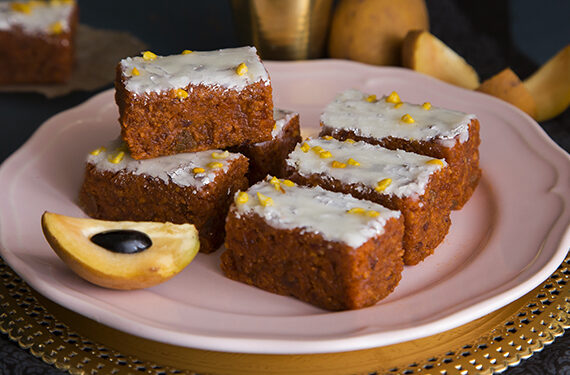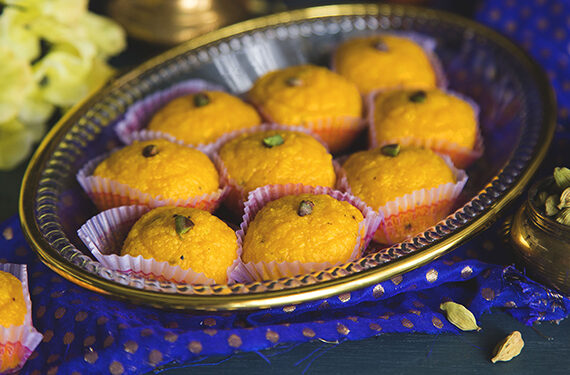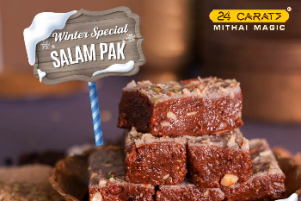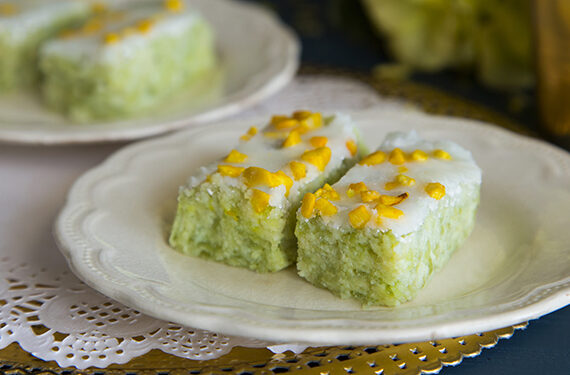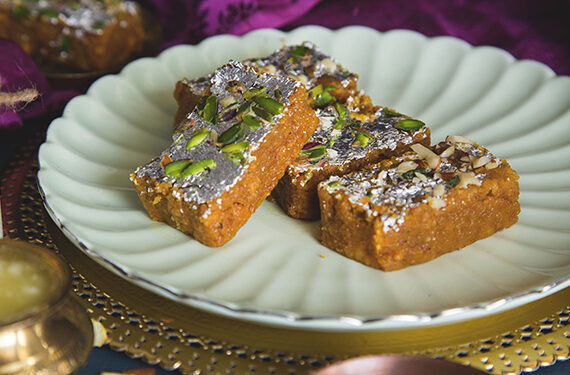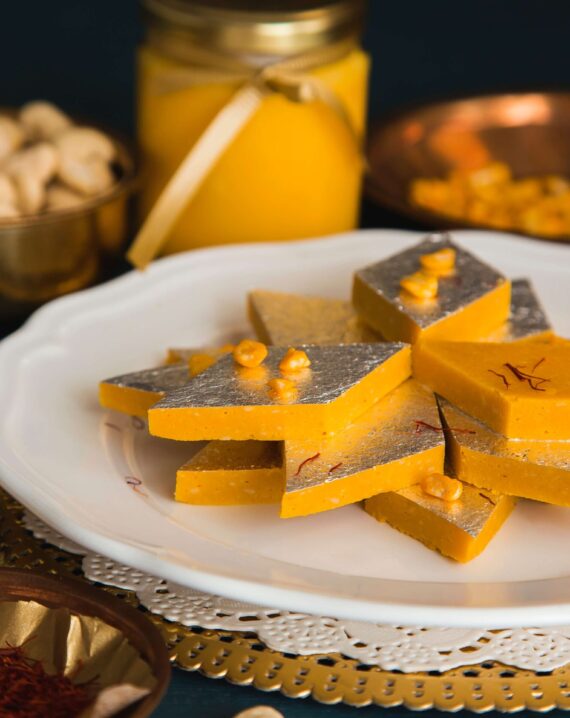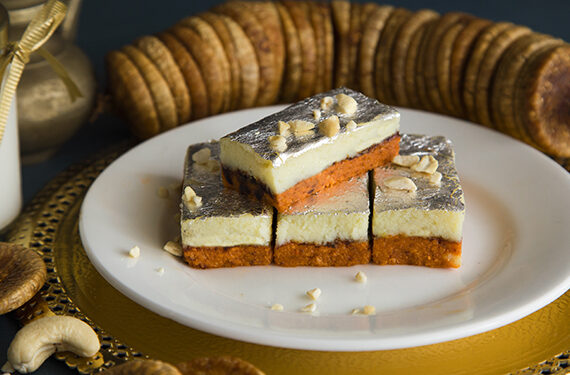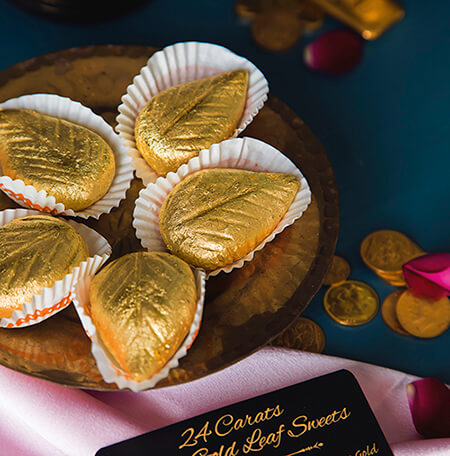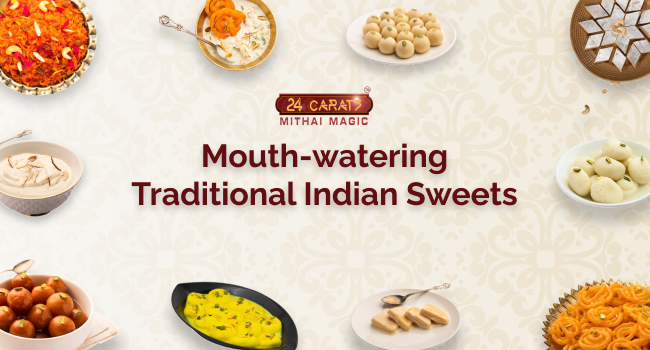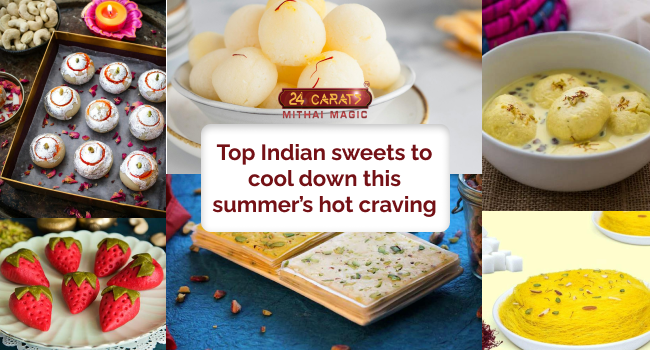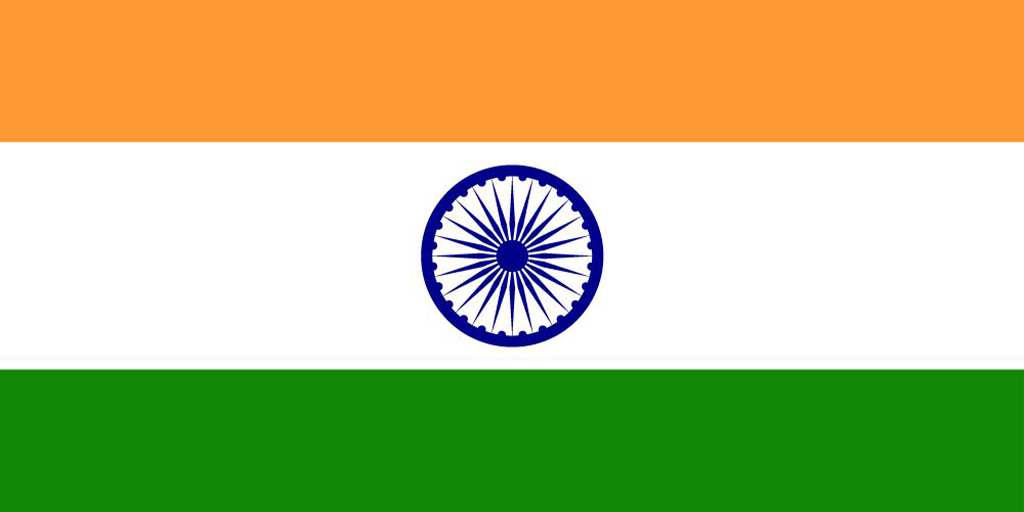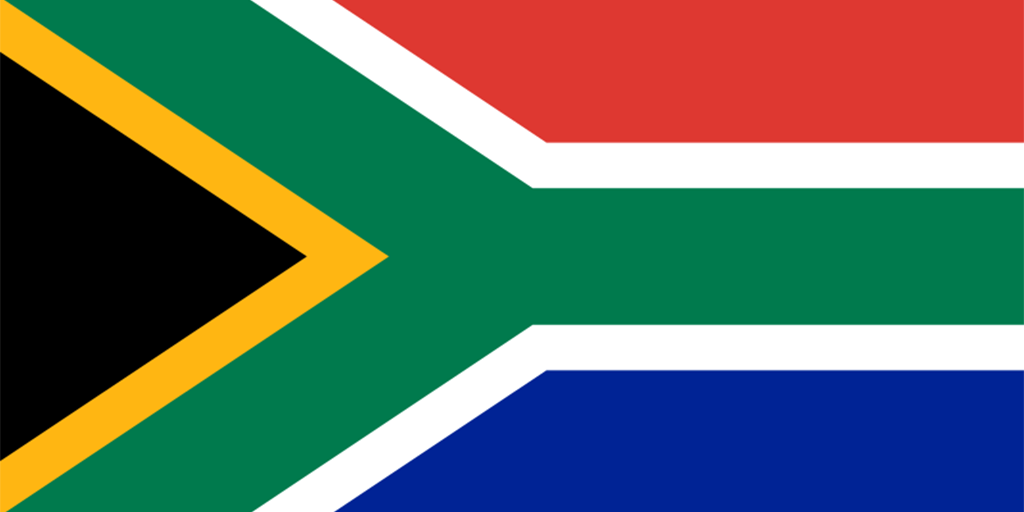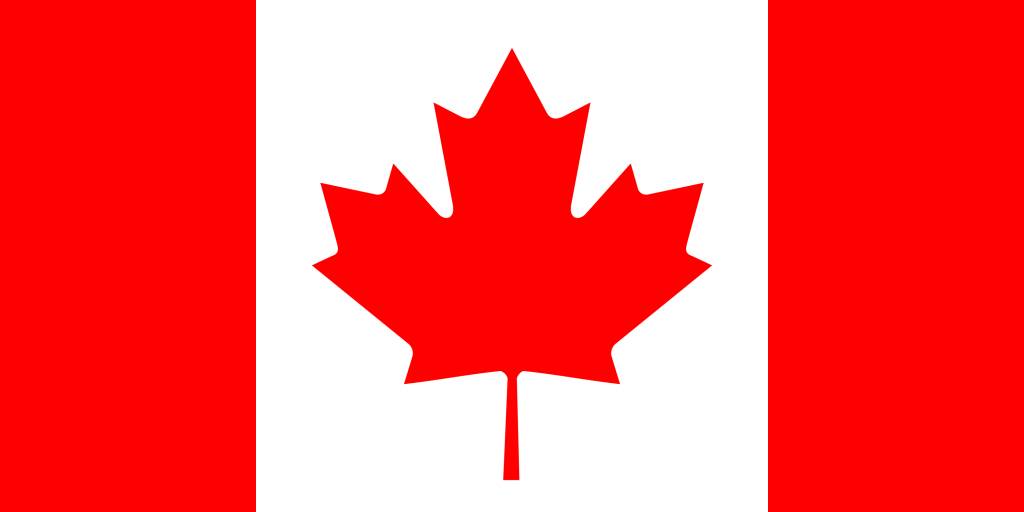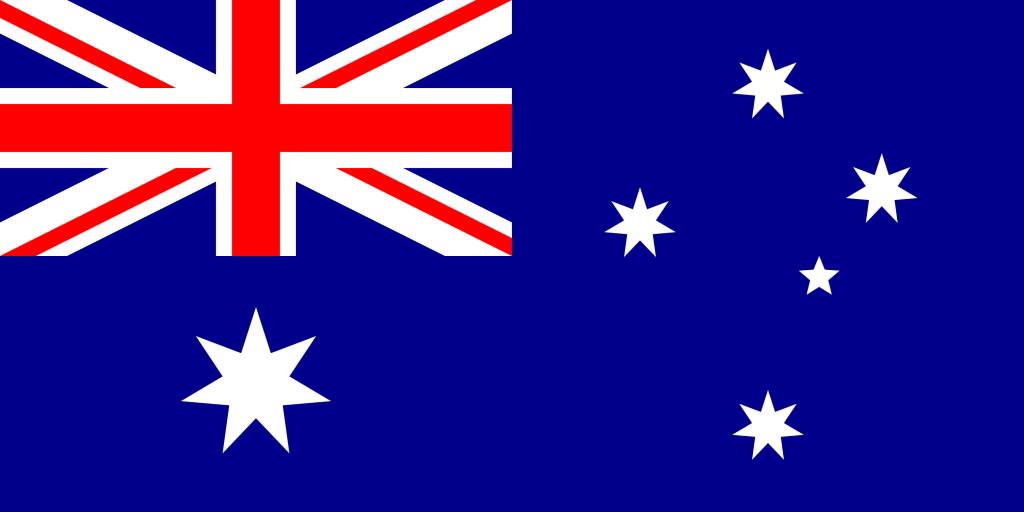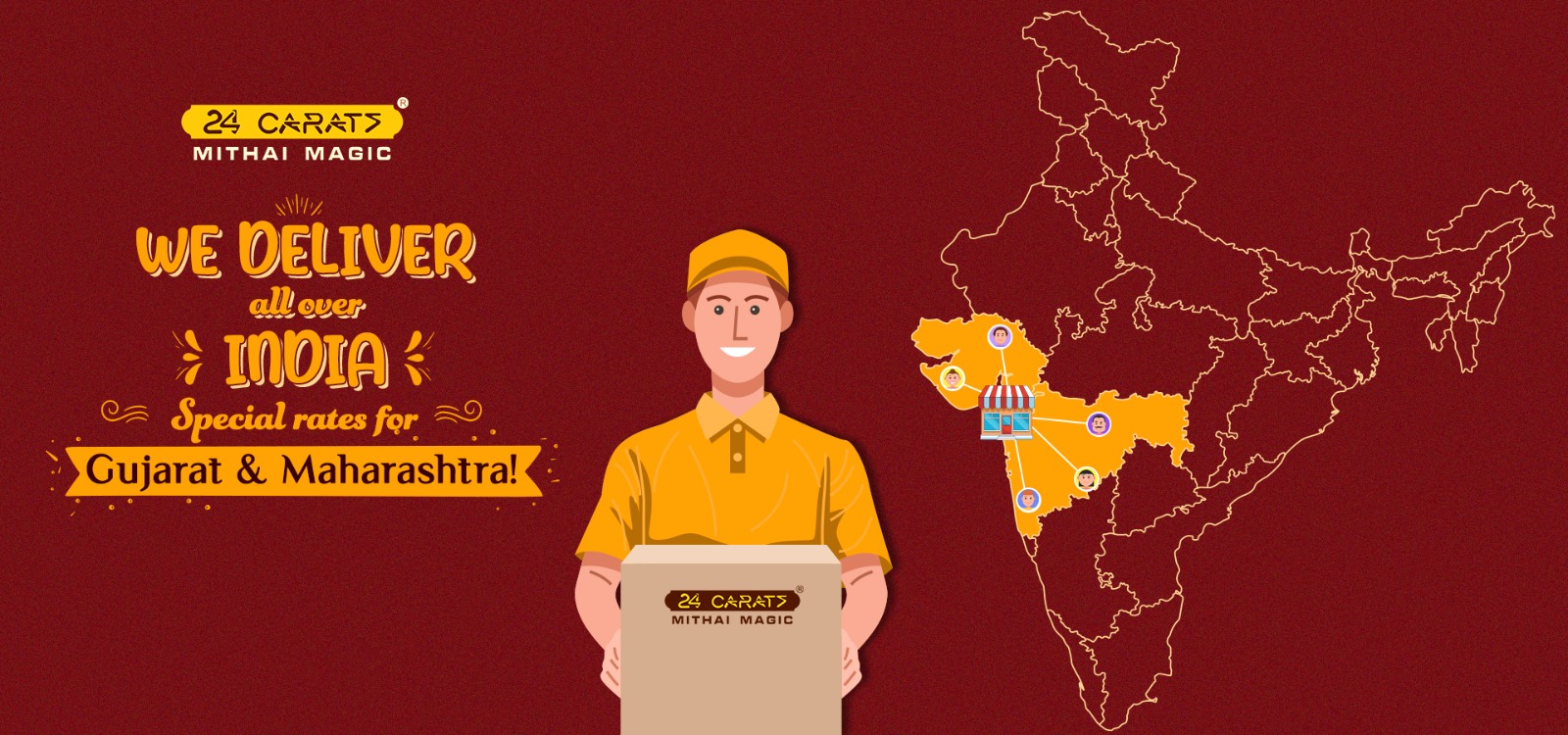 Order Online
Order Online

Fresh Ingredients,
Delightful Flavours, Ravishing Taste!

get sweets delivered at your doorstep

Don't worry! We have got you covered.
We are based in Surat but our sweets
travel the world.
Years In Business
Serving Exceptional Quality with unmatched taste since 1935.
Customers Served Per Year
We have made way to hearts of lacs of people through our yummy Indian Mithai.
Variety of Sweets
Give your taste buds a treat, Order from 200+ variety of Indian Mithai.
Outlets
Place your order online or visit any of our retail outlets in Surat.
Order sweets online or walk-in to our store to try
Providing Quality, Traditional and Authentic taste of all the Indian Sweets. At the same time,
Innovating new products for the young generation.
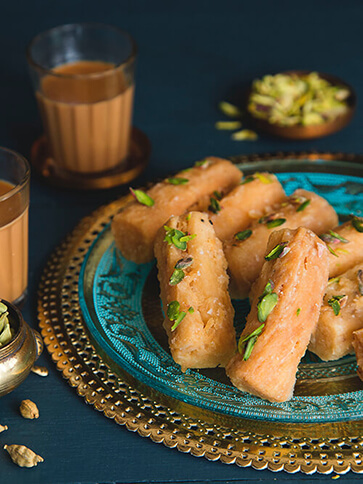
Desi Ghee Sweets
Sweets made using various flours and frizzled in pure healthy clarified butter. Made with authentic desi ghee.
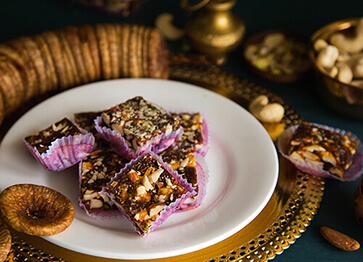
Ayurvedic Recipes
Made from several herbs and spices which our rishimunis have described in ancient books. Used for rejuvenation & acts as tonic for whole body.
24 CARAT’S BEST SELLING MITHAI
Check out and order our best selling sweets across various cities in India and across the World.

About 24 Carats Mithai Magic
Authentic Taste & Finest Ingredients
From the start, we have been on a continuous journey to delight each customer who visits our abode. It is our goal to provide the most demanding customers with memorable, magical sweets that deliver the best of taste and discover a luxury experience found only in Surat, and only at 24 Carats.
In a span of 83 years, 24 Carats Mithai Magic has grown to comprise a classic collection of 200 traditional Indian desserts in tune with the contemporary tastes and delightfully rich quality.
Rakshabandhan Special
Gold Leaf Sweets
This is not your ordinary sweet which has thin layer of edible foil, This is 24 Carats Pure Gold Leaf Sweet. It’s speciality is not only it’s pure gold foil but it’s taste is so rich that you can’t resist to try.
Not only for Rakshabandhan, Be it a wedding, any good news or simply any occassion, you must indulge once in the authentic flavours of the gold leaf sweet.
Our Blogs
Mouth-watering Traditional Indian Sweets
Gulab Jamun
 Let’s start with Gulab jamun, a soft delicious berry sized ball made with milk solids, flour & a leavening agent. These are soaked in rose flavored sugar syrup. If you eat one, you will end up wantting to eat them again and again!
Gulab Jamun has a brownish tint and may be eaten hot or cold, according to your preference.
Place of Origin: Its origins are in Punjab, Jammu & Kashmir, Haryana, Himachal Pradesh, Uttar Pradesh, and Uttarakhand, where it is a common accompaniment at festivities and celebrations.
Let’s start with Gulab jamun, a soft delicious berry sized ball made with milk solids, flour & a leavening agent. These are soaked in rose flavored sugar syrup. If you eat one, you will end up wantting to eat them again and again!
Gulab Jamun has a brownish tint and may be eaten hot or cold, according to your preference.
Place of Origin: Its origins are in Punjab, Jammu & Kashmir, Haryana, Himachal Pradesh, Uttar Pradesh, and Uttarakhand, where it is a common accompaniment at festivities and celebrations.
Kulfi
 Let’s talk about the Indian version of Ice Cream, “Kulfi”!
Extremely popular among teenagers and young adults, it's created with whole milk, powdered sugar, cardamom powder, and comes in delectable flavors like strawberry, mango, Kesar, raisins, and almonds.
Kulfi is rich and creamy, and it comes in clay pots or on popsicle sticks. It's simple for you to make, typically done at home during parties, marriage ceremonys and festivals.
You need to take the molds out of the freezer 10-15 minutes before serving. It is just to enable the kulfi to melt somewhat. We Indians like that dripping Kulfi and we believe that it adds to a layer. You can also add toppings like ground cardamom, saffron, or pistachios according to your preferences and flavored touch. Falooda (vermicelli noodles) is also sometimes served with kulfi.
Place of origin: India during the Mughal period
Let’s talk about the Indian version of Ice Cream, “Kulfi”!
Extremely popular among teenagers and young adults, it's created with whole milk, powdered sugar, cardamom powder, and comes in delectable flavors like strawberry, mango, Kesar, raisins, and almonds.
Kulfi is rich and creamy, and it comes in clay pots or on popsicle sticks. It's simple for you to make, typically done at home during parties, marriage ceremonys and festivals.
You need to take the molds out of the freezer 10-15 minutes before serving. It is just to enable the kulfi to melt somewhat. We Indians like that dripping Kulfi and we believe that it adds to a layer. You can also add toppings like ground cardamom, saffron, or pistachios according to your preferences and flavored touch. Falooda (vermicelli noodles) is also sometimes served with kulfi.
Place of origin: India during the Mughal period

Rasgulla
 Rasgulla or Roshgulla (for all my fellow Bengalis out there) is a Bengali dish that is widely consumed throughout India. The first thing that will come to your mind after eating this sweet will be its fluffiness and how quickly it will melt in your mouth.
Ideally within a week Rasgulla should be consumed after removing the packaging.
Rasgulla is often mixed with sugar syrup to give it that extra fluffiness. You can also use rose water to give it a distinct flavor and richness.
Place of origin: Orissa, West Bengal
Rasgulla or Roshgulla (for all my fellow Bengalis out there) is a Bengali dish that is widely consumed throughout India. The first thing that will come to your mind after eating this sweet will be its fluffiness and how quickly it will melt in your mouth.
Ideally within a week Rasgulla should be consumed after removing the packaging.
Rasgulla is often mixed with sugar syrup to give it that extra fluffiness. You can also use rose water to give it a distinct flavor and richness.
Place of origin: Orissa, West Bengal
Milk Peda
 The milk peda is a popular dessert, and numerous variations may be found around the country. Paneer or khoya, condensed milk, milk powder, chopped pistachio, cardamom powder, saffron, and ghee are common ingredients in peda. Peda is generally served after lunch or dinner.
Pedas originated in the present-day Uttar Pradesh city of Mathura. The Mathura Peda is the city's most well-known variation. Several other variations of Pedha include Kandi Peda from Satara, Maharashtra and dood peda from Nandini Milk Co-operative in Karnataka.
In a nutshell Pedha is your milk sugary dish which will never disappoint you whatever variation you might eat.
Place of origin: Mathura, Uttar Pradesh
SeviyanSeviyan are a classic sweet consisting of vermicelli and dried fruits in a Muslim family. The significant components are Vermicelli, sugar, cashew nuts, almonds, raisins, saffron, green cardamom, milk, and butter. The vermicelli is boiled in milk with the addition of dried fruits. The dish Lachha Seviyan is popularly consumed during Eid festivities.
Place of origin: Punjab
The milk peda is a popular dessert, and numerous variations may be found around the country. Paneer or khoya, condensed milk, milk powder, chopped pistachio, cardamom powder, saffron, and ghee are common ingredients in peda. Peda is generally served after lunch or dinner.
Pedas originated in the present-day Uttar Pradesh city of Mathura. The Mathura Peda is the city's most well-known variation. Several other variations of Pedha include Kandi Peda from Satara, Maharashtra and dood peda from Nandini Milk Co-operative in Karnataka.
In a nutshell Pedha is your milk sugary dish which will never disappoint you whatever variation you might eat.
Place of origin: Mathura, Uttar Pradesh
SeviyanSeviyan are a classic sweet consisting of vermicelli and dried fruits in a Muslim family. The significant components are Vermicelli, sugar, cashew nuts, almonds, raisins, saffron, green cardamom, milk, and butter. The vermicelli is boiled in milk with the addition of dried fruits. The dish Lachha Seviyan is popularly consumed during Eid festivities.
Place of origin: Punjab
Shrikhand
 Shrikhand, also known as Green Yogurt, is a renowned Maharashtra and Gujarat delicacy. Strain yogurt, sugar, saffron, and cardamom go into this delectable dessert. Visitors love the creamy, velvety dessert, affectionately known as 'ambrosia of the gods.'
Shrikhand also comes in other flavors like Mango where it is called Amrakhand and a pistachio flavor as well. They are all rich variations that can make your hot summers a sweet delight.
Place of origin: Gujarat and Maharashtra
Shrikhand, also known as Green Yogurt, is a renowned Maharashtra and Gujarat delicacy. Strain yogurt, sugar, saffron, and cardamom go into this delectable dessert. Visitors love the creamy, velvety dessert, affectionately known as 'ambrosia of the gods.'
Shrikhand also comes in other flavors like Mango where it is called Amrakhand and a pistachio flavor as well. They are all rich variations that can make your hot summers a sweet delight.
Place of origin: Gujarat and Maharashtra
Gajar ka Halwa
 Gajar (carrot) ka Halwa is a mouth-watering recipe and a very common household sweet that every Indian mom loves to make.
Halwa can be created with various ingredients, including pineapple, badam, watermelon, papaya, raw banana, beetroot, and pumpkin, depending on the chef's mood.
Place of Origin: It is mainly found in North India, particularly Punjab, Jammu and Kashmir, Haryana, Himachal Pradesh, Uttar Pradesh, and Uttarakhand.
Gajar (carrot) ka Halwa is a mouth-watering recipe and a very common household sweet that every Indian mom loves to make.
Halwa can be created with various ingredients, including pineapple, badam, watermelon, papaya, raw banana, beetroot, and pumpkin, depending on the chef's mood.
Place of Origin: It is mainly found in North India, particularly Punjab, Jammu and Kashmir, Haryana, Himachal Pradesh, Uttar Pradesh, and Uttarakhand.
Ras Malai
 Although it's made a little differently, Ras Malai is a distant relative of rasgulla. If the sight of cheese balls drenched in creamy soapy milk and spiced with cardamom appeals to you, you will like this treat.
The flavor of Ras Malai is most refined when served cold. Ras Malai will pierce your heart like an arrow, and you'll be back for more before you know it.
Place of Origin: West Bengal
Although it's made a little differently, Ras Malai is a distant relative of rasgulla. If the sight of cheese balls drenched in creamy soapy milk and spiced with cardamom appeals to you, you will like this treat.
The flavor of Ras Malai is most refined when served cold. Ras Malai will pierce your heart like an arrow, and you'll be back for more before you know it.
Place of Origin: West Bengal
Rabdi
 Rabdi is a creamy, decadent dessert prepared with milk, sugar, almonds, and spices.
Depending on who is eating it, the dessert is served hot or cold. It is liked by those who enjoy a drink with chunks of cream. Rabri is delicious on its own but you can also eat it with malpua or jalebis.
Sweetened milk is heated in a big open pot (kadhai) to make rabri. When a layer of cream appears on the surface of the milk, it is removed and set aside. The technique is repeated until the milk supply is depleted.
Place of origin: North India, mainly Punjab, Jammu & Kashmir, Haryana, Himachal Pradesh, Uttar Pradesh, Uttarakhand
Rabdi is a creamy, decadent dessert prepared with milk, sugar, almonds, and spices.
Depending on who is eating it, the dessert is served hot or cold. It is liked by those who enjoy a drink with chunks of cream. Rabri is delicious on its own but you can also eat it with malpua or jalebis.
Sweetened milk is heated in a big open pot (kadhai) to make rabri. When a layer of cream appears on the surface of the milk, it is removed and set aside. The technique is repeated until the milk supply is depleted.
Place of origin: North India, mainly Punjab, Jammu & Kashmir, Haryana, Himachal Pradesh, Uttar Pradesh, Uttarakhand
Jalebi
 A tourist to India is unlikely to be unfamiliar with Jalebi, as it is one of the most popular sweets produced in various colors throughout the nation. Rice flour, all-purpose flour, baking powder, curd, allowed food color, vegetable oil, sugar, and water are used in making Jalebis. Depending on the color agent you can find a yellow or an orange jalebi mostly across India and adding Rabdi to it can bring even more joy to you.
Place of origin: Different variants of Jalebis are found everywhere in India
A tourist to India is unlikely to be unfamiliar with Jalebi, as it is one of the most popular sweets produced in various colors throughout the nation. Rice flour, all-purpose flour, baking powder, curd, allowed food color, vegetable oil, sugar, and water are used in making Jalebis. Depending on the color agent you can find a yellow or an orange jalebi mostly across India and adding Rabdi to it can bring even more joy to you.
Place of origin: Different variants of Jalebis are found everywhere in India
Kaju Katli
 The Indian delicacy Kaju katli (meaning "cashew slice"), also known as Kaju Barfi, is similar to a barfi. Barfi is created by thickening milk with sugar and other components.
This dish will give you an exquisite and rich experience. Usually it is a dish that is served during Diwali but any festiv moment can involve this delicacy to be part of your sweet craving.
The Indian delicacy Kaju katli (meaning "cashew slice"), also known as Kaju Barfi, is similar to a barfi. Barfi is created by thickening milk with sugar and other components.
This dish will give you an exquisite and rich experience. Usually it is a dish that is served during Diwali but any festiv moment can involve this delicacy to be part of your sweet craving.

Conclusion
If this blog left you with a sweet craving, do check out our website to order them now using this link. Also share this blog with your friends and family to tell them its time to celebrate with some Indian sweets. If you like this blog and want to read some more awesome blogs like this, please click on the link below.Top Indian sweets to cool down this summer’s hot craving
Ice Halwa
 A sweet delicacy famous across India, Ice Halwa definitely tops our list. The saying "Don't judge a book by its cover" could not be more applicable to ice halwa, as it is not composed of ice. While the thought of a chilly halwa dish may catch your attention, ice halwa is rather a delectable variation on the classic dish, and its colour and preparation are what give it its name. Because it is powdered with icing sugar, ice halwa is ivory in colour. Because the combination is rested for up to four hours before serving, it has a thick, creamy and satisfying texture.
A sweet delicacy famous across India, Ice Halwa definitely tops our list. The saying "Don't judge a book by its cover" could not be more applicable to ice halwa, as it is not composed of ice. While the thought of a chilly halwa dish may catch your attention, ice halwa is rather a delectable variation on the classic dish, and its colour and preparation are what give it its name. Because it is powdered with icing sugar, ice halwa is ivory in colour. Because the combination is rested for up to four hours before serving, it has a thick, creamy and satisfying texture.
Kaju Gulkand
 A sugared rose petal delicacy, that gives us major chills is definitely one of the most favoured sweets across India. When combined with Kaju, Gulkand forms one of the most favoured delicacies. Apart from being tasty enough, in the summer, Gulkand can actually prevent sunstrokes, nasal bleeding, and drowsiness.
Real Mango Magic Halwa
How could Mango Halwa not be a part of our favourite summer sweet? Consisting of real mango, capturing the real essence of Indian summers, Mango Halwa is a fragrant and scrumptious Indian sweet pudding that's perfect as a snack or after-meal dessert.
A sugared rose petal delicacy, that gives us major chills is definitely one of the most favoured sweets across India. When combined with Kaju, Gulkand forms one of the most favoured delicacies. Apart from being tasty enough, in the summer, Gulkand can actually prevent sunstrokes, nasal bleeding, and drowsiness.
Real Mango Magic Halwa
How could Mango Halwa not be a part of our favourite summer sweet? Consisting of real mango, capturing the real essence of Indian summers, Mango Halwa is a fragrant and scrumptious Indian sweet pudding that's perfect as a snack or after-meal dessert.

Rasgulla
 It's difficult to say whether the syrup-soaked balls or the rich, sweet syrup itself are the most wonderful part of this dish! Made all over the Indian Subcontinent, but love the most by Bengalis, these little balls are cooked in water until light and spongy, then soaked in sugar syrup. Because the balls are chilled for a couple of hours before serving, you may make this ahead of time and cherish it.
It's difficult to say whether the syrup-soaked balls or the rich, sweet syrup itself are the most wonderful part of this dish! Made all over the Indian Subcontinent, but love the most by Bengalis, these little balls are cooked in water until light and spongy, then soaked in sugar syrup. Because the balls are chilled for a couple of hours before serving, you may make this ahead of time and cherish it.
Rasmalai
 In the popular ras malai, soft, spongy dumplings made of chenna or paneer are soaked in thick, creamy milk. For summers, allowing yourself to have a bowl of this delicious sweet to treat yourself does no harm. Very few sweets are as delightful as chilled ras malai with saffron and cardamom infusion.
In the popular ras malai, soft, spongy dumplings made of chenna or paneer are soaked in thick, creamy milk. For summers, allowing yourself to have a bowl of this delicious sweet to treat yourself does no harm. Very few sweets are as delightful as chilled ras malai with saffron and cardamom infusion.
Sutarfeni
 The feeling of sweetness melting in your mouth naturally, leaving you feeling mesmerised in this summer air. Sutarfeni is just one of those dishes that make you drool instantly in these hot summers.
The feeling of sweetness melting in your mouth naturally, leaving you feeling mesmerised in this summer air. Sutarfeni is just one of those dishes that make you drool instantly in these hot summers.

Berry Delight
 What’s better than indulging in some berrylicious delights? Stuffing your mouth with berry flavoured sweets can really bring in the feels. Ranging from varieties of berries out there, strawberry is one of our favourites and when it comes to a sweet, what better can you ask for?
Apart from the listed sweets, there are so many other sweets that give us lip-smacking satisfaction, when eaten with the right kinds of combinations. Ranging from special orange, pineapple, raspberry and many other summer fruit sweets to our all-time favourite Kaju Katri in different flavours, along with other dry fruit sweets 24-carat mithai shop has got you covered for all. Bengali sweets like rajbhog, and different types of Rabdis, hit differently in summer while pure desi ghee sweets like Mohanthal, Motipak, and Dahithara give you the energy to beat this summer heat. Pair our sweets with icecreams or chilled drinks and enjoy the hot summer days from the comfort of your home.
If this blog left you craving some really fun summer sweets, do share this blog with your friends and family to give them some cravings too. Cannot wait to see how you plan to reward your tastebuds this summer.
What’s better than indulging in some berrylicious delights? Stuffing your mouth with berry flavoured sweets can really bring in the feels. Ranging from varieties of berries out there, strawberry is one of our favourites and when it comes to a sweet, what better can you ask for?
Apart from the listed sweets, there are so many other sweets that give us lip-smacking satisfaction, when eaten with the right kinds of combinations. Ranging from special orange, pineapple, raspberry and many other summer fruit sweets to our all-time favourite Kaju Katri in different flavours, along with other dry fruit sweets 24-carat mithai shop has got you covered for all. Bengali sweets like rajbhog, and different types of Rabdis, hit differently in summer while pure desi ghee sweets like Mohanthal, Motipak, and Dahithara give you the energy to beat this summer heat. Pair our sweets with icecreams or chilled drinks and enjoy the hot summer days from the comfort of your home.
If this blog left you craving some really fun summer sweets, do share this blog with your friends and family to give them some cravings too. Cannot wait to see how you plan to reward your tastebuds this summer.If you are looking to order sweets online ,
Order from here
Celebrate any occasion with our delicious sweets
With constant support of our happy customers, We started delivering our sweets on wedding functions,
occasions, catering services and corporate events.
Events
Events
Click edit button to change this text. Lorem ipsum dolor sit amet, consectetur adipiscing elit. Ut elit tellus, luctus nec ullamcorper mattis, pulvinar dapibus leo.
Wedding
Wedding
Click edit button to change this text. Lorem ipsum dolor sit amet, consectetur adipiscing elit. Ut elit tellus, luctus nec ullamcorper mattis, pulvinar dapibus leo.
Festival
Festival
Click edit button to change this text. Lorem ipsum dolor sit amet, consectetur adipiscing elit. Ut elit tellus, luctus nec ullamcorper mattis, pulvinar dapibus leo.
Loved by our customers
As seen on Media & History Channels
Pure gold leaf sweets with thin layer of edible golden foil, Taste the pure excellence!
24 Carats is the best online sweet delivery in india to sell this authentic sweet, which has received a very positive response from customers.
Welcome to the World of 24 Carats Mithai Magic
Delivering Sweets to
Customers Across the Globe
24 Carats has been serving and delivering sweets to various countries across the world. Our clients order sweets from Canada, USA, Australia, Singapore, Middle East and U.K.

